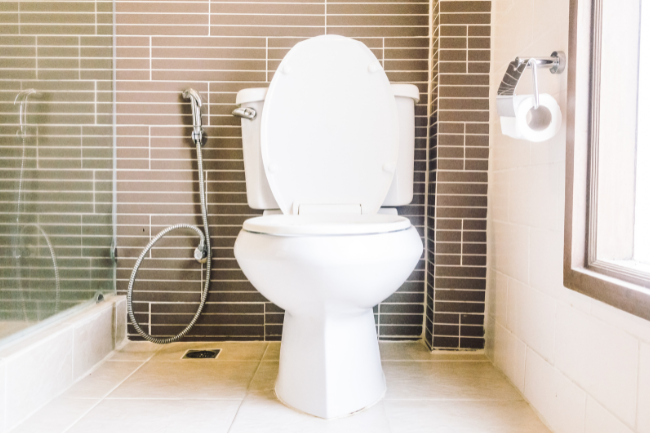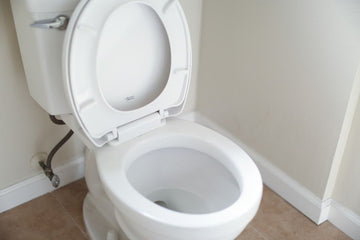In today's fast-paced world, the concept of a smart home is no longer a futuristic dream but a present-day reality. Among the myriad of technological advancements, smart home integration with water-saving toilets stands out as a revolutionary approach to conserving water while enhancing convenience. As Industry QA professionals, understanding this integration can offer insights into sustainable living and efficient resource management.

The Rise of Smart Home Technology
Smart home technology has rapidly evolved, transforming the way we interact with our living spaces. From smart lighting to automated thermostats, the integration of technology into homes is driven by the desire for efficiency, convenience, and sustainability. In this context, efficient toilets have gained prominence as they address one of the most pressing environmental concerns: water conservation.
Understanding Water-Saving Toilets
Water-saving toilets, such as dual-flush and high-efficiency models, are designed to use significantly less water than traditional toilets. According to the EPA's WaterSense program, these toilets can save thousands of gallons of water per year, making them an essential component of any eco-friendly home.
Dual-Flush Toilets: A Popular Choice
Dual-flush toilets offer two flushing options: a full flush for solid waste and a reduced flush for liquid waste. This innovative design allows homeowners to choose the appropriate flush, thereby conserving water without compromising performance. For more on dual-flush technology, visit our detailed article on dual-flush toilets.
High-Efficiency Toilets: Maximizing Savings
High-efficiency toilets (HETs) are engineered to use less than 1.3 gallons per flush, compared to the 1.6 gallons used by conventional toilets. By incorporating advanced flushing mechanisms, HETs ensure effective waste removal with minimal water use. Learn more about efficient toilet options in our piece on efficient toilets.
Integrating Smart Technology with Water-Saving Toilets
The integration of smart technology with water-saving toilets elevates their functionality, offering features such as remote control, water usage monitoring, and automated maintenance alerts. This not only enhances user convenience but also contributes to more informed water management practices.
Remote Control and Monitoring
With smart home apps, users can control their toilets remotely, adjusting flush settings or scheduling maintenance checks from their smartphones. This level of control allows for personalized water usage, adapting to the needs of different household members.
Automated Maintenance Alerts
Smart toilets equipped with sensors can detect leaks or malfunctions and alert homeowners through smartphone notifications. This proactive approach to maintenance can prevent water wastage and costly repairs, ensuring the toilet functions optimally at all times.
The Environmental Impact of Smart Water-Saving Toilets
Incorporating smart water-saving toilets into homes can significantly reduce water consumption, contributing to environmental conservation efforts. By optimizing water use, these toilets help conserve vital resources and lower household water bills. For more strategies on water conservation, explore our guide on cost-effective water-saving solutions.
Moreover, as part of a larger smart home ecosystem, these toilets can be integrated with other devices, such as smart showers and faucets, to create a comprehensive water management system. This holistic approach ensures that every drop of water is used efficiently, promoting sustainable living.
Implementation Challenges and Solutions
While the benefits of smart water-saving toilets are clear, their implementation can pose challenges, particularly in older homes not equipped with smart infrastructure. However, with the right planning and resources, these challenges can be overcome.
Retrofitting Existing Homes
Retrofitting involves upgrading existing toilets with smart technology and water-saving features. This can be achieved through the installation of smart flush valves or replacing old toilets with modern, efficient models. For a deeper understanding of toilet water efficiency, read our article on toilet water efficiency ratings.
Cost Considerations
The initial investment for smart water-saving toilets can be higher than traditional models, but the long-term savings on water bills and maintenance costs make them a financially viable option. Additionally, many regions offer rebates and incentives for installing water-efficient appliances, further offsetting the costs.
Conclusion
As the world moves towards more sustainable practices, smart home integration with water-saving toilets represents a significant step in resource conservation and home automation. By embracing this technology, homeowners can enjoy the dual benefits of reducing their environmental footprint and enhancing their living experience. As Industry QA experts, staying informed about these advancements is crucial for promoting sustainable solutions in the built environment.

FAQ Section
What are the main benefits of integrating smart technology with water-saving toilets?
Integrating smart technology with water-saving toilets offers benefits such as remote control, water usage monitoring, and automated maintenance alerts, which enhance user convenience and promote efficient water management.
How does a dual-flush toilet contribute to water conservation?
A dual-flush toilet provides two flushing options, allowing users to choose a full flush for solid waste and a reduced flush for liquid waste, thereby conserving water without compromising performance.
Are there any incentives for installing water-saving toilets?
Yes, many regions offer rebates and incentives for installing water-efficient appliances, making it financially beneficial to invest in water-saving toilets.






